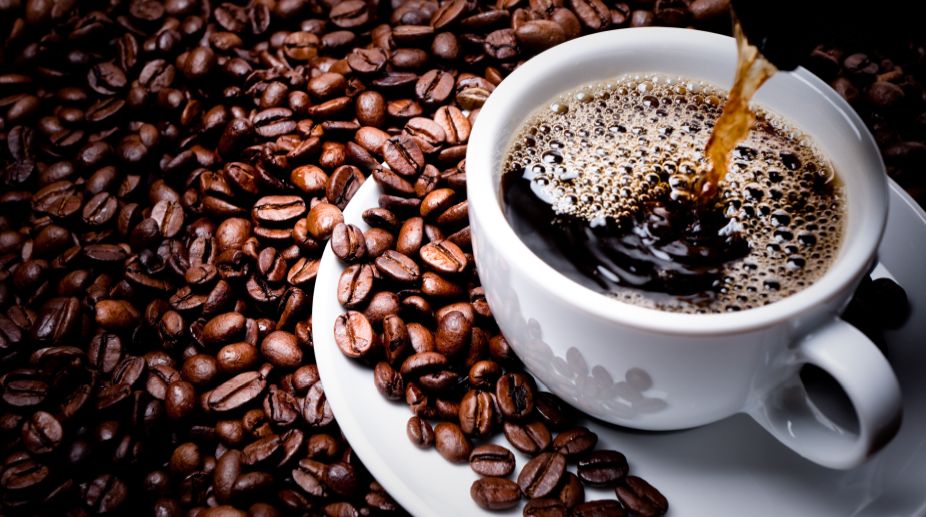A coffee lover’s dream destinations
Step into the captivating realm of South India's coffee blossom season, where the landscape transforms into a stunning canvas adorned with delicate white flowers.
The answer to brewing that perfect cup of coffee lies in the realms of science.

(Photo: Getty Images)
Coffee comprises a seed, commonly known as a bean, and the source of the beverage we drink. The seed is termed a bean since it resembles the vegetable. 75 per cent of the coffee produced worldwide is the Arabica and 20 per cent is the Robusta variety. Arabica beans consist of 0.8 to 1.4 per cent caffeine while Robusta contains 1.7 to four per cent.
RO Bengis and RJ Anderson, professors from the department of chemistry, Yale University, New Haven, US, embarked on one of the earliest researches on coffee in 1932. They wrote that coffee had become an almost indispensable beverage and according to their study it was revealed that the import of coffee into America, in 1931, amounted to 768 tons, corresponding to a per capita consumption of 12 pounds.
It is surprising, they stated, that in view of this extensive use of coffee, notwithstanding some information of caffeine, very little was known of coffee’s chemical compounds, which are present and make up the bulk of the bean. That factor prompted both professors to initiate a systematic investigation of various constituents of the coffee bean.
Advertisement
Their research included the study of not only the natural raw bean but the freshly roasted beans as well. They analysed unsaponifiable matter of the coffee bean, which are components of an oily mixture that fail to form soap when blended with sodium hydroxide or potassium hydroxide. Above all, was their path breaking study of the properties of Kahweol, a diterpene or unsaturated molecule, found in Arabica coffee, structurally related to cafestol.
Kahweol is an Arabic word from which coffee is derived. Kahweol is highly sensitive to light and different temperatures — this is a property which Bengis and Anderson focused on and enabled humanity to understand the importance of this constituent, which a century later, has taught us to take the help of this component, by brewing an invigorating and stimulating cup of coffee. We must return to physics and chemistry to understand what exactly makes that delicious brew.
Coffee’s unique characteristics prove that the actual method of brewing it plays a pivotal role to its taste. One is assailed by a question, why is the coffee produced in a café so different to what we make at home.
Christopher H Hendon, a materials chemist, is certain that cafés have successfully utilised certain principles of chemistry and physics. For example, variables involving temperatures, water chemistry, particle size, ratio of water to coffee, not to forget the time factor of heat being passed, all combine for a refreshing brew. It therefore depends on the person making the coffee who controls these variables.
In short, the precise methodology, which entails brewing the coffee, must be understood. It is preferable for organic acids or an organic compound with acidic properties, and heterocyclic compounds, or a ring structure, with atoms of at least two different elements, as members of its rings, to be about 1.5 per cent by mass. We prefer espresso coffee because it has the ideal mass. If the mass goes beyond these limits it becomes difficult to prepare a good cup of coffee. There is the Americano coffee, with a different dilution of water.
Both the espresso and Americano brews have about the same amount of coffee. But why are their flavours so different? We must return to the principles of science. The two basic types of brewing devices are those that fully immerse the coffee into the brew water and one where the water flows through the coffee bed. The main difference is the temperature of coffee particulates is higher in the immersion system. That boils down to the speed at which the coffee flavour moves through the water-coffee interface, or through different factors involving temperature and mass, all of which will determine the eventual taste. Higher temperatures of coffee particulates will, ideally, trap more of the compounds, which contribute to the taste.
The size of the ground coffee particulates also control the flow rate and if the flow rate is too slow the concentrate of coffee will be too high, making the taste bitter. Water seeps slowly through finer ground coffee. The entire process is influenced by the quality of coffee and water chemistry.
Volatiles, like carbon dioxide, should not escape from the coffee bean due to longer periods of storage as that will result in a less tasty cup. This explains why cafes try to ensure their coffee beans are four weeks old from the date of roasting. Roasting coffee beans transforms the chemical and physical properties of green beans.
The roasting process is what produces the characteristic flavour of coffee by causing the green beans to change in taste.
It has been a long time since Bengis and Anderson studied the segments of science in coffee beans, enabling us to now brew coffee into a stimulating beverage.
It alerts people who drink it, reflecting England’s famous diarist, Samuel Pepys, who wrote these words in his diary on 17 January 1660, “I went to the coffee club and heard very good discourse.”
Advertisement